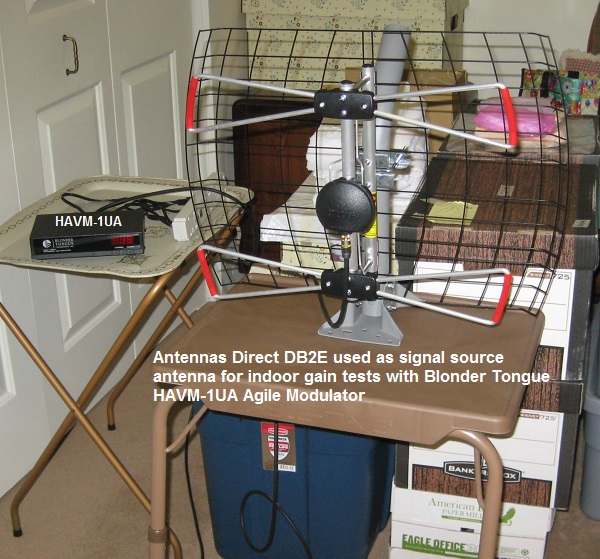Quote:
Originally Posted by tripelo

Rabbit73, looks like you have a good collection of equipment for portable testing.
|
Thank you for your comments.
My wife supported my experiments, so I was able to collect the equipment I needed to solve reception problems.
Quote:
|
Having a near field view over open water helps with signal reception.
|
Yes, the signals were quite constant, except when a boat went by in the signal path.

Quote:
|
That depends on the accuracy one may be looking for and the test environment. If looking for accuracy in the one dB or less range, it may be very difficult.
|
Yeah, I never felt I needed an attenuator with 0.1 dB steps.
Quote:
|
As you know, a lab grade antenna range is implemented in such a way to minimize all reflections that could be received in the main beam or sidelobes of the antenna under evaluation.
|
Yes, reflections are an ever present problem.
Kent Britain, WA5VJB, creator of the Cheap Yagi, would place the antennas at ground level to minimize ground reflections during antenna shootouts. I tried that with indoor antenna tests. The results were consistent with results at 3 ft above the floor, but the signals were about 20 dB weaker on the floor (concrete slab covered with carpet).
http://www.wa5vjb.com/references/Ant...0Notes-keb.pdf
WA5VJB Antenna Measuring Notes, Extract
Kent Britain WA5VJB (Written for Scatterpoint issue 1-2000 updated Sept 2006)
Quote:
Since 1987 I have set up my portable antenna range at 26 Conferences measuring well over 1500 antennas, mainly in the 0.9 to 24 GHz range. G4DDK has asked me to list some of my observations.
Open Area:
30 to 40 Meters is nice, but I have often set up in more confined areas of 10 to 20 Meters. But I try to avoid areas near walls that might cause reflections. Given a choice, I set up on grass (easier on my feet) but parking lots can also be used. The whole idea is to find an area where you have a consistent signal about the same size as the capture area of the antenna. i.e. a bit bigger than the biggest antenna you plan to test. Our greatest source of error is having the signal level on one edge of the dish stronger than on the other edge of the dish.
I gave up on elevated ranges a few years ago. I almost always set up with the source antenna (Usually a horn) sitting right on the ground. Thus the antenna and its reflected image are virtually the same point. Sometimes the horn is sitting on a sheet of metal, sometimes it's sitting on a sheet of absorber. Sheets of the Carbon loaded foam work well if you don't have an Eccosorb. Also the sheet of magnetic material that hold advertising to your fridge work well as Iron loaded absorber. The sheet metal gives me a little more signal; the absorber usually gives me a cleaner test area. Although there is no hard fast rule here, I just use what ever works best. If there is a nice consistent signal area, we start measuring antennas!
|
END OF EXTRACT


Quote:
|
If the signal variability is not too great, and the accuracy requirements are not too stringent, in most cases that probably works OK.
|
My conclusion, also.
Quote:
In comparative testing, if there variables that one cannot control. Some form of averaging to wash out the variability can be helpful.
In the case of systems receiving signals that vary with time, then time averaging can reduce the errors. If long enough time and enough samples are averaged for each system under test, then errors in measurement can be reduced.
|
That sounds like the best approach for your comparisons, since you are not just comparing antenna and preamp combinations, but antenna, preamp, and antenna location combinations.
_____________________________
Happy Thanksgiving!
Hope you are staying safe.
Best regards,
rabbit73